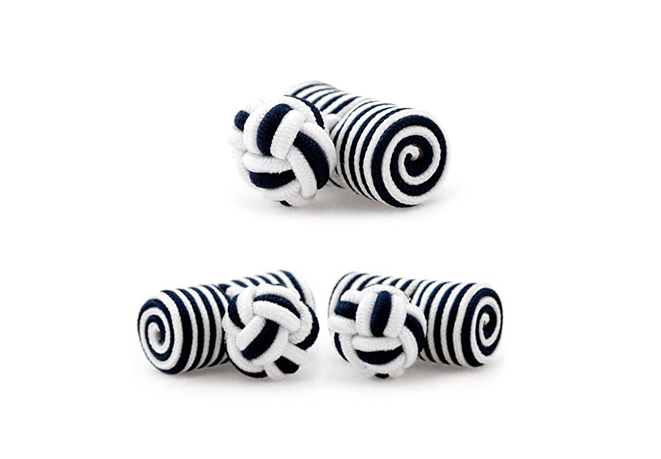The metal cufflinks that are so common today were a by-product of the electroplating of precious metals, which became popular in the 19th century. While metal cufflinks were taking over the world, however, silk knot cufflinks have retained a degree of popularity since they were reputedly invented by the Paris shirtmaker Charvet in 1904 – because they are relatively inexpensive, they come in a wide range of colors, and they are inherently interesting from a visual perspective.
Silk knots are an inexpensive alternative to wearing conventional cufflinks
because no metal and no complicated manufacturing is involved – the fastening is crafted from tread fashioned into a pair of connected knots or balls.
This style could be described as resembling the closed fist of a monkey, and that became an alternative name. The style is also sometimes called Turks Head or Knapton’s Knot.
Advantages
Apart from the price advantage, the silk knot has the big plus of color. Few cuff closures look more elegant than simple white or black silk knots; but you can find silk knots in enough colors to match or contrast with all the shirts in your wardrobe (and then some). In fact it’s quite usual to buy a packaged collection of different colors to give yourself the luxury of choice.
Disadvantages
The silk knot does have a couple of disadvantages. Being made of thread with little inherent reinforcement, these cuff fastenings are unlikely to last as long as a metal cufflink; they wear eventually and may even fray, and in harsh conditions they can lose their color.
A pair of silk knots may also vary slightly in size from the start – silk is a natural material, after all, and natural materials have their own dynamic. They can also shrink, expand or go out of shape slightly in use; you would be particularly unlucky if this happened. Fortunately the replacements will not be expensive – not least because these fastenings are rarely made from silk these days; often they are made from elastic or other manmade fibers.
A more important consideration for most men will be the relatively difficult insertion of the silk knot.
Some practice is required to push the relative pliable knot through the cuff hole, and if possible it makes sense to actually put them into the cuffs before you put the shirt on. Do one layer at a time and gently roll the knot into the hole.
